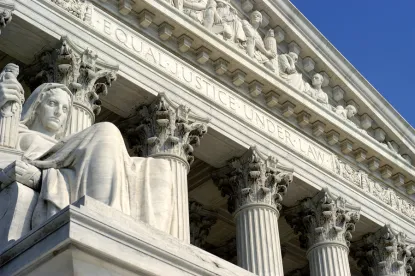A petition for writ of certiorari recently filed with the US Supreme Court could have big implications for parties that have an interest in the development or protection of the seafloors surrounding the United States — environmentalists and industry actors alike. At issue is the ability of the president to control the development of large swaths of offshore acreage by designating areas as “national monuments” under the Antiquities Act, 54 U.S.C. § 320301, which was enacted in 1906 and authorizes the president to declare national monuments by public proclamation.
In 2016, President Barack Obama established an offshore national monument (the Northeast Canyons and Seamounts Marine National Monument) on submerged lands and associated waters in the Exclusive Economic Zone (EEZ), of the United States i.e., between 12 and 200 miles from the coastline. This was based on a new administrative interpretation of the Antiquities Act that was first implemented in 2006, when then-President George W. Bush proclaimed an 89-million-acre area in the Pacific to be the Northwestern Hawaiian Islands Marine National Monument. Since 2006, 13 marine monuments have been proclaimed, covering nearly 700 million acres of the EEZ. The Northeast Canyons and Seamounts Marine National Monument at issue in this case covers nearly 5,000 square miles (similar to the size of Connecticut) about 130 miles off Cape Cod. The designation protects deep marine ecosystems, corals, whales, and sea turtles; it prohibits most commercial fishing and would begin to prohibit crab and lobster fishing in 2022.
Several fishing groups challenged the monument designation made under the Antiquities Act. To date, 158 national monuments have been created under this Act. In a case of first impression, a panel of the DC Circuit upheld the designation and recognized that the Antiquities Act does not render redundant or nullify the National Marine Sanctuaries Act, which has more procedural hurdles and different standards in protecting marine sanctuaries than the Antiquities Act does for designating “monuments.” The court also held that the Antiquities Act protects both surface and submerged lands and that the United States has significant control, under domestic and international law, over the EEZ to make the designation under that act. Massachusetts Lobstermen’s Association v. Ross, 945 F.3d 535 (D.C. Cir. 2019).
On June 5, 2020, President Trump lifted the prohibitions on commercial fishing at the above monument but did not change the designation. Proclamation No. 10049, 85 Fed. Ref. 35, 793. Because the designation did not change, on July 27, 2020, the Massachusetts Lobstermen’s Association, represented by the Pacific Legal Foundation, filed a writ of certiorari petition. U.S. Sup. Ct. Case No. 20-97. The petition presents novel questions on the scope of presidential powers under congressional statutes. A mootness issue lurks behind the recent proclamation.
Among the questions presented are (1) whether the president’s interpretation of the Antiquities Act of 1906 for dedication of monuments to cover submerged land and not just federal and Indian land is permitted, (2) whether the president’s interpretation impliedly repeals and circumvents the National Marine Sanctuaries Act, (3) whether the vast seafloor itself as designated by the president’s declaration as protected resources and ecosystems is the “smallest area” of protection allowed under the Antiquities Act, and (4) whether the president’s interpretation of “land owned or controlled” by the United States under the Antiquities Act conservatively includes only “full dominion and power” lands – Federal or Indian - or liberally includes lands over which there is federal “limited control,” too, such as arguably the EEZ. See Treasure Salvors, Inc. v. Unidentified Wrecked & Abandoned Sailing Vessel, 569 F.2d 330 (5th Cir. 1978), and Odyssey Marine Exploration Inc. v. Unidentified Shipwrecked Vessel or Vessels, 636 F.3d 1338 (11th Cir. 2011) for the former, conservative approach.
The broad, aggressive interpretation of the Antiquities Act, if it stands, could enable future presidents to interpret the act to cover more “submerged” lands in the EEZ only and prohibit more activity other than just fishing, such as oil and gas exploration and production. It could also open the door to presidents having even more sweeping powers over Congress. Therefore, this is an important issue warranting a legal watch to see what the high court does.





 />i
/>i